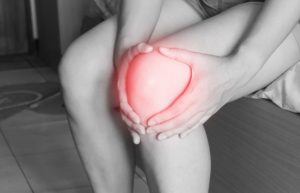It can be confusing to know when to ice or when to heat an injury. I learned the hard way what can happen when you get it wrong. Years ago, I took a slow-motion twisty fall while skiing. I blew out my knee which earned me a toboggan ride down the mountain, a short visit to the ski patrol hut, and a bag of ice. On the way home, I sat in the passenger seat and propped the ice on my knee for a few minutes, but quickly became chilled. Instead, I turned up the heat and stayed toasty for the rest of the two hour drive. However, when I got out of the car, I found that my knee had morphed into something the size of a cantaloupe.
 When I think back about that day, I realize that sitting with my knee in front of a vent blasting warm air was probably the worst thing I could have done. Yes, the knee was severely injured, but my failure to ice it only made things worse, and for that I plead ignorance. Now I know better. I also understand that it can be hard to know what’s going to help your injury the most—ice or heat. So here are a few guidelines, based on Chinese medicine, Western medicine, and common sense:
When I think back about that day, I realize that sitting with my knee in front of a vent blasting warm air was probably the worst thing I could have done. Yes, the knee was severely injured, but my failure to ice it only made things worse, and for that I plead ignorance. Now I know better. I also understand that it can be hard to know what’s going to help your injury the most—ice or heat. So here are a few guidelines, based on Chinese medicine, Western medicine, and common sense:
- First of all, know the properties of both heat and ice. In nature, ice and cold contract and slow down movement. Just like a river that freezes in the winter, ice has the same effect on your body. In contrast, heat expands, loosens, and creates movement.
- When you have a fresh injury, ice causes the tissue and capillaries around the injury to constrict to keep the swelling down. This is a good thing, and icing a sprained ankle, blown out knee, or any other injury is recommended during the first two to three days.
- If your fresh injury involves a muscle spasm, however, icing it immediately may actually contract the muscle further, making it tighter and aggravating the spasm. In this case, heat is a better choice.
- Heat helps the vessels around your injury expand, which increases circulation. This can help promote healing, because it brings new blood with nutrients and anti-inflammatory white blood cells into the area. So after the initial trauma and swelling have resolved (several days at least), and you’re in the healing phase, heat may be beneficial.
- Heat also loosens and relaxes stiff muscles. If you have a pulled muscle, stiff neck, muscle spasm, or muscle-related back pain, heat is your friend.
- If you’ve ever been to physical therapy, you may have noticed that the therapists often heat an injury before you work it, and ice afterward. By doing this, they’re loosening up the muscles and other soft tissue to avoid injuries during your session. Icing afterward is a way to cool the area down and avoid inflammation. If you’re recovering from an injury, this is also a good at-home plan to speed your recovery.
- Sometimes it can still be hard to know what to do. Is your injury a muscle problem or inflammation? Which would be the most beneficial? In
 Chinese medicine, it’s common to see what your injury wants. By that I mean try one. If you put heat on it, does it feel better or worse? If it’s better, stick with heat; if it’s worse try some ice. I know that may sound a little schizophrenic, but in Chinese medicine, injuries can run hot or cold. Hot injuries often feel hot to the touch and may appear red or inflamed; they like cold. Cold injuries sometimes feel cold to the touch, but tend to be stiff and are aggravated by ice or cold, and do better with heat. Give your injury what feels best.
Chinese medicine, it’s common to see what your injury wants. By that I mean try one. If you put heat on it, does it feel better or worse? If it’s better, stick with heat; if it’s worse try some ice. I know that may sound a little schizophrenic, but in Chinese medicine, injuries can run hot or cold. Hot injuries often feel hot to the touch and may appear red or inflamed; they like cold. Cold injuries sometimes feel cold to the touch, but tend to be stiff and are aggravated by ice or cold, and do better with heat. Give your injury what feels best. - How much should you heat or ice your injury? There are no hard and fast rules, but there are guidelines. To control the swelling of a new injury, ice it for 15-20 minutes every two or three hours. If it’s severe, do this for the first couple of days, slowly backing off on the frequency. When you’re heating an injury, give it about 20 minutes at least twice a day. For warming up before a workout, 10 minutes is enough, and after a workout, give it 10-15 minutes of ice.
- What to use? For icing, a blue ice pack or a bag of frozen vegetables work well. Wrap your ice source in a towel to protect your skin. Also, you can freeze water in a paper cup and gently rub the ice over your injury, peeling back the cup as the ice melts. For heating, a microwavable rice (or other grain) bag, a heating pad, or an old-fashioned hot water bottle works well. Also I’m a big fan of something called far-infrared heat (FIR). Far-infrared heat are light waves that warm your body without creating a lot of heat around you. It penetrates into the deeper tissue layers, without the intense heat, and researchers have found that far-infrared heat is helpful for wound healing and pain relief. At home, a far-infrared heating pad is my go-to source of therapeutic heat.
Knowing when to heat an injury and when to ice it can make or break your recovery time. After my ski accident, I ended up in the emergency room in a lot of pain and had to have the knee drained. I know now that had I kept the ice on it during those first hours, it would have saved me from a lot of pain, swelling, and an ER bill.



